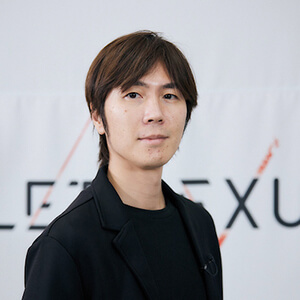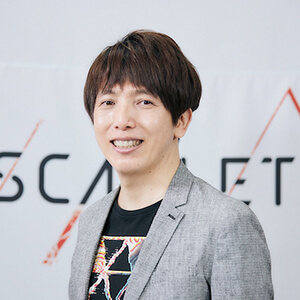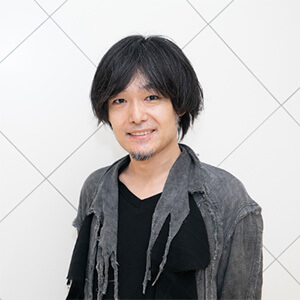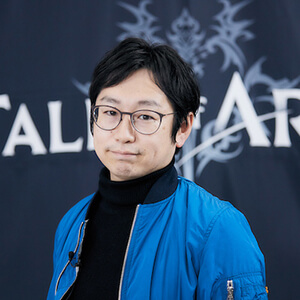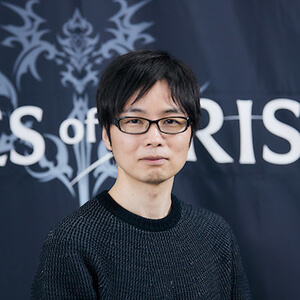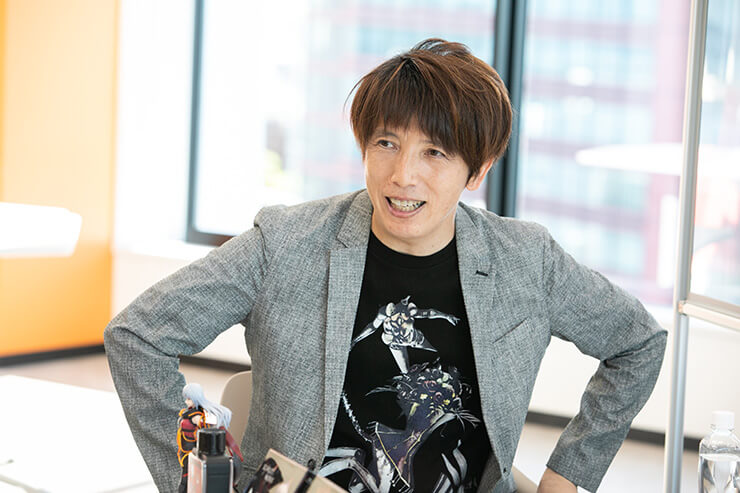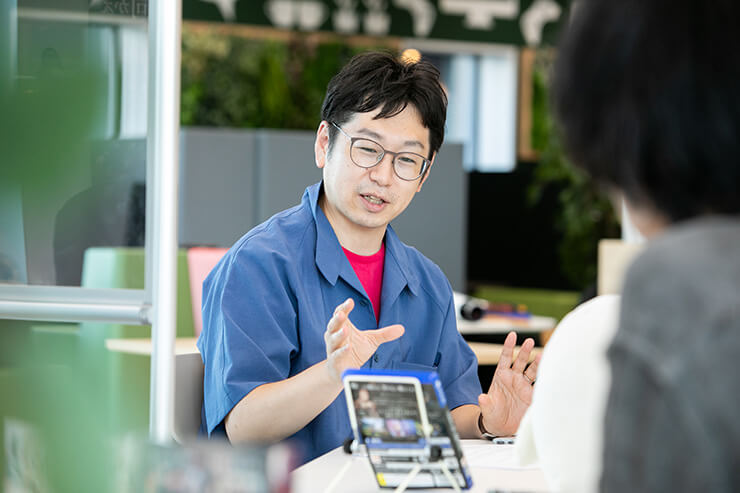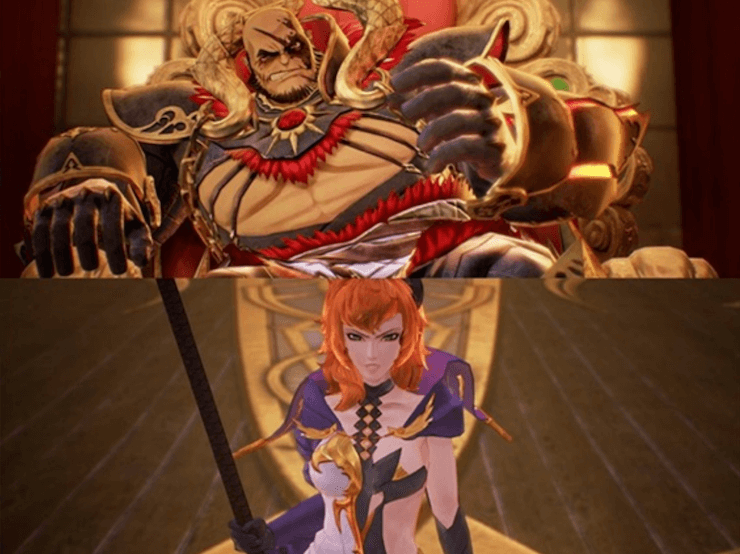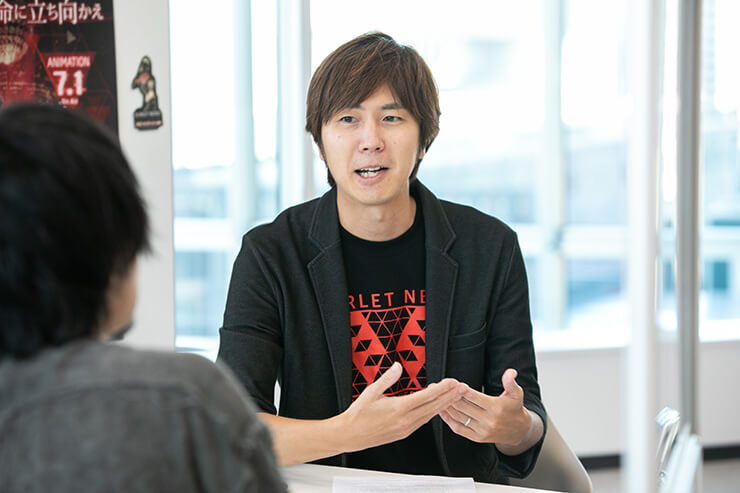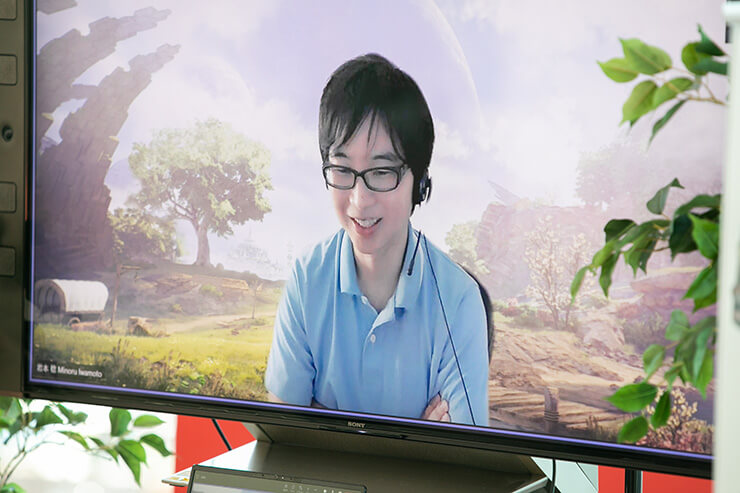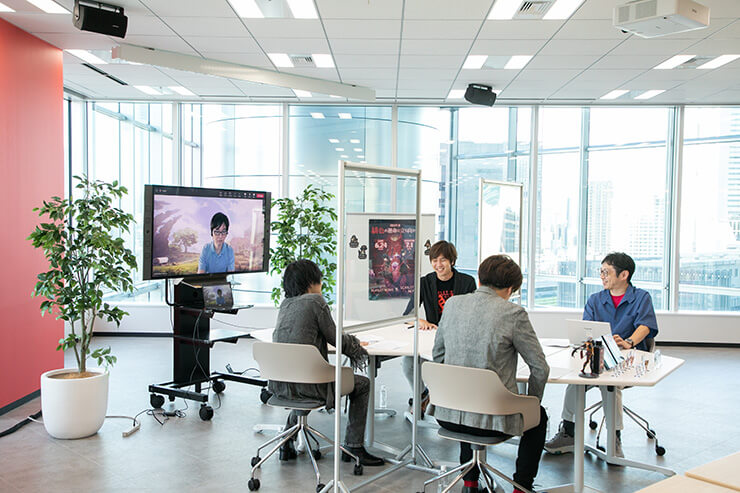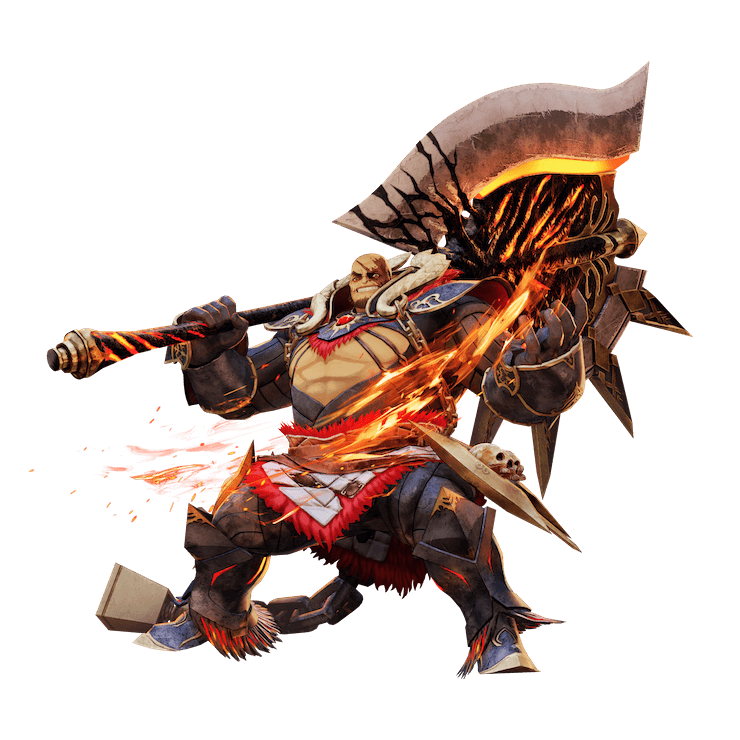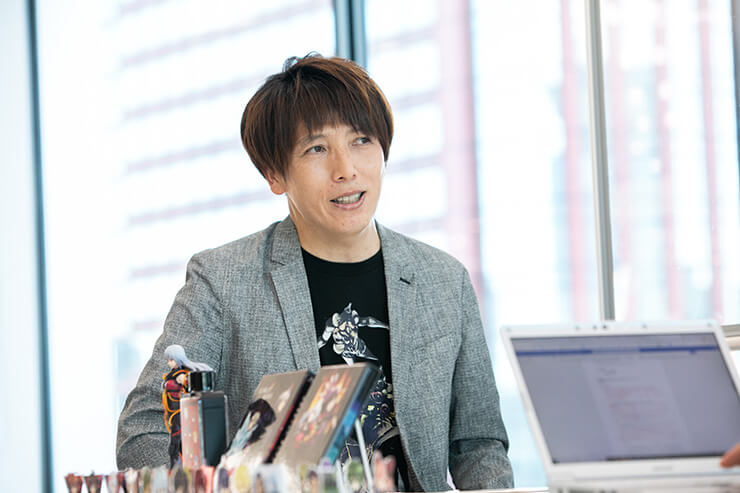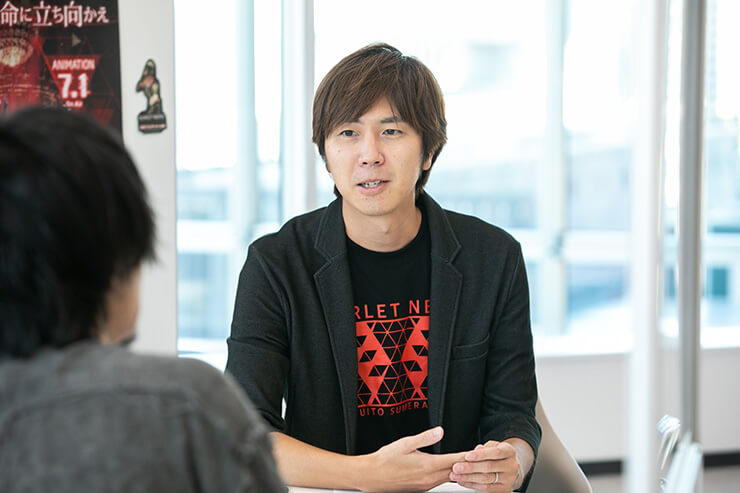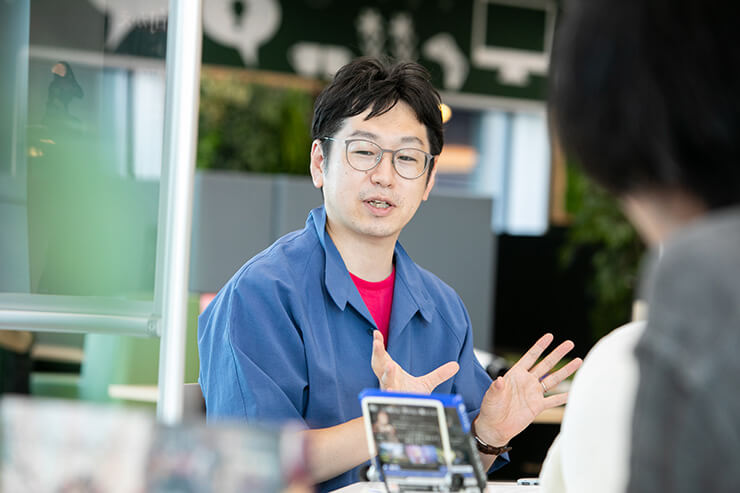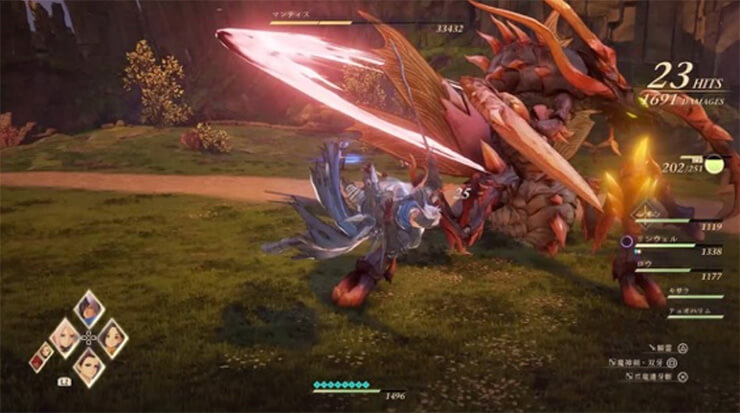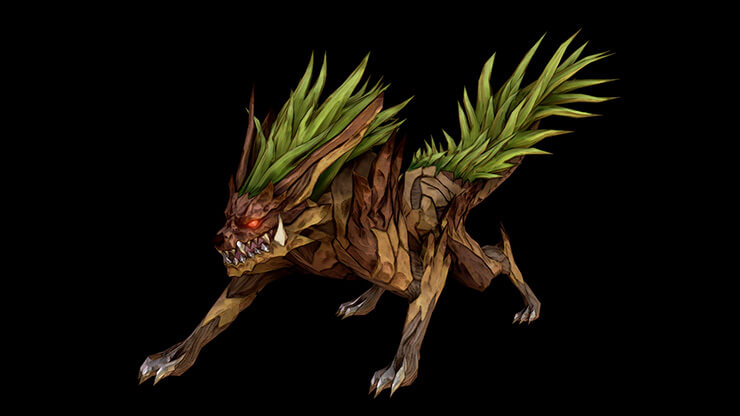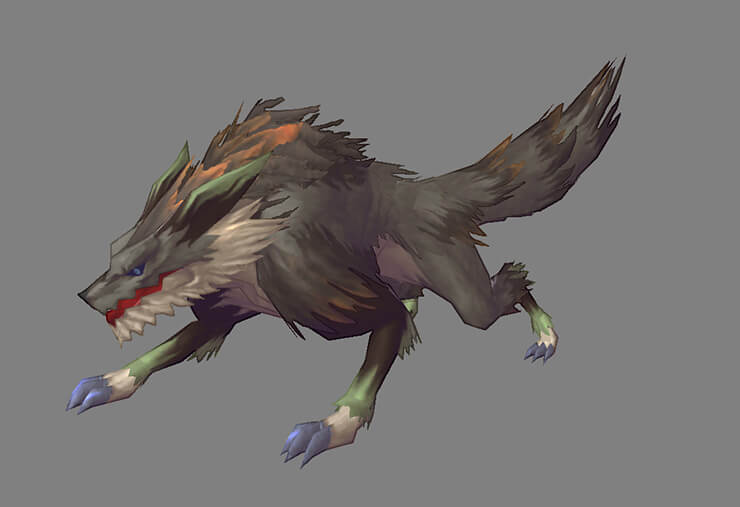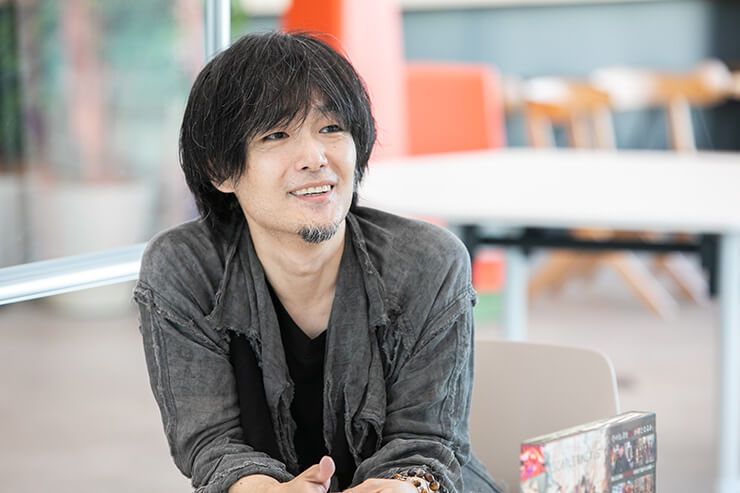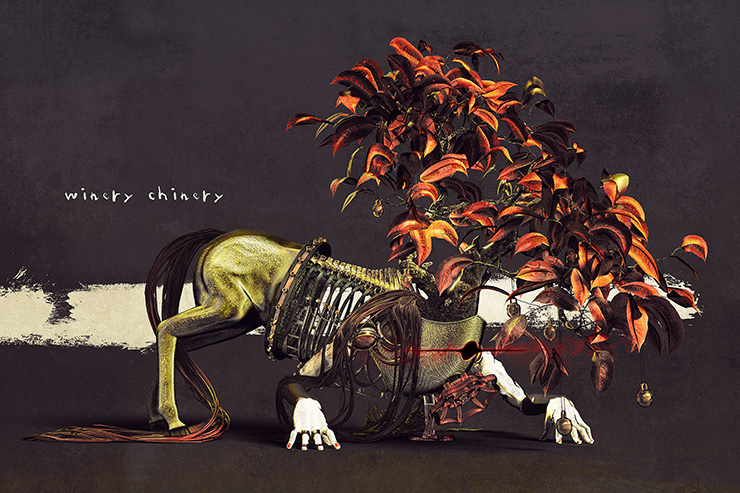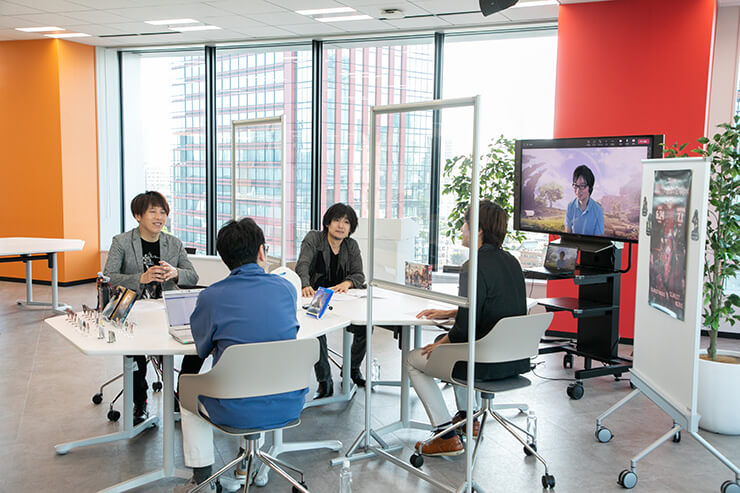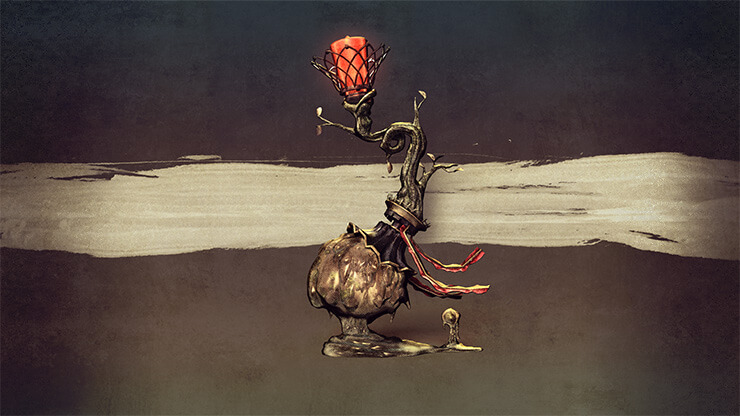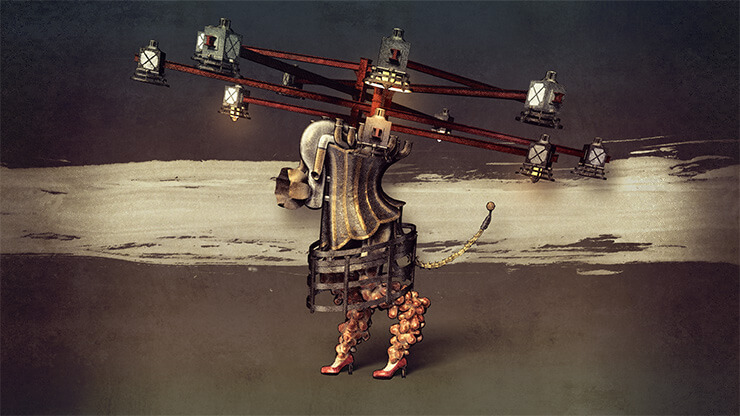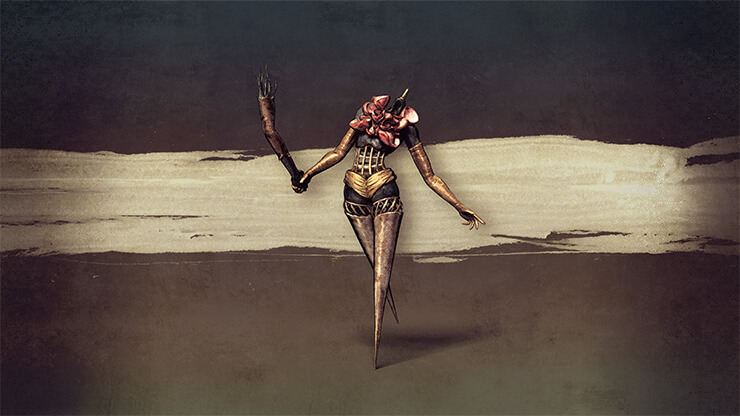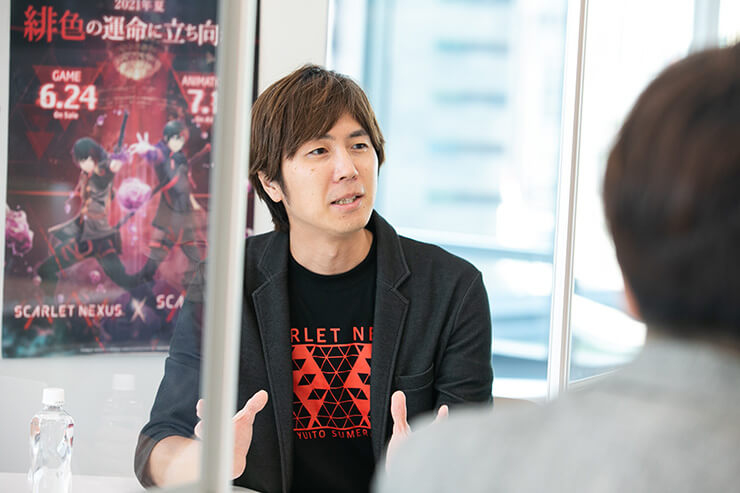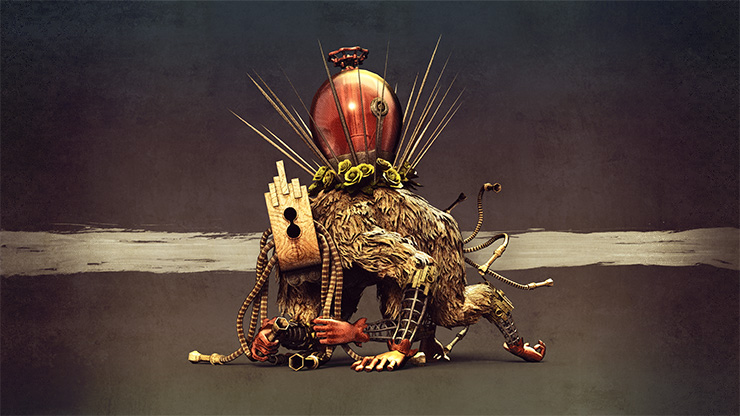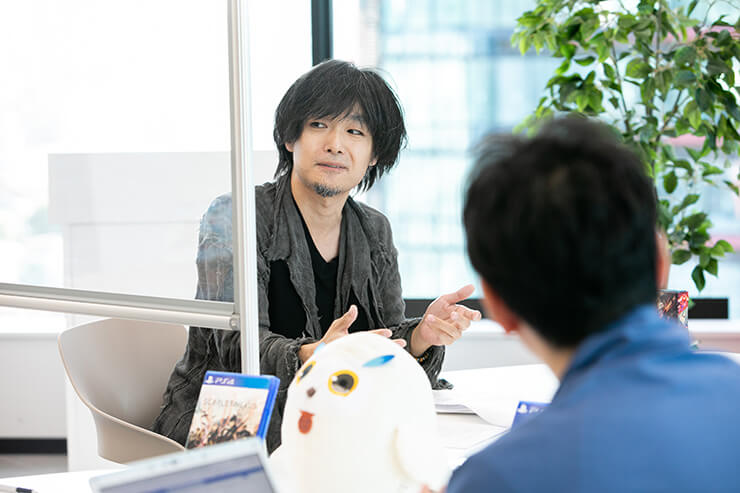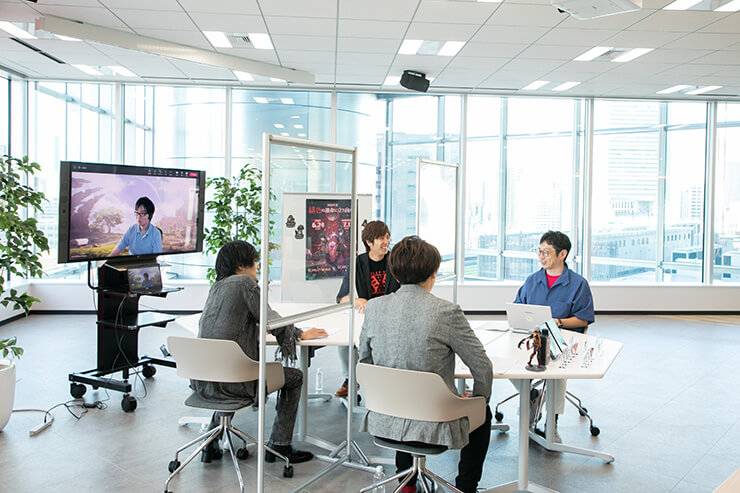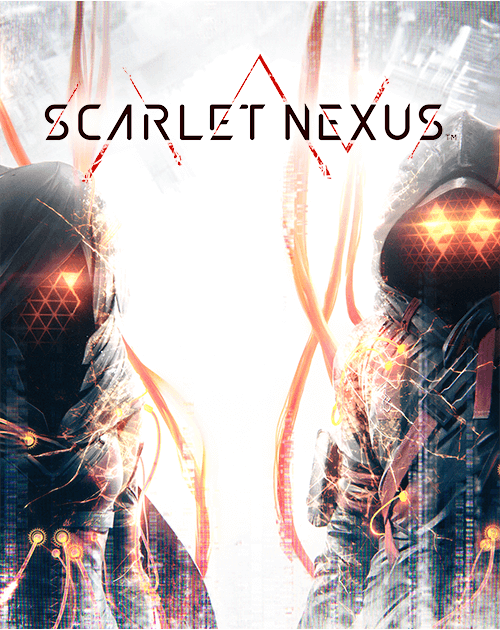Scarlet Nexus and Tales of Arise Developers Pull Back the Curtains in Exclusive RPG Scoop! (Part 1)
The dev staff for smash-hits Scarlet Nexus and Tales of Arise, plus Masakazu Yamashiro—designer of the former title's "Other" antagonists—have gotten together for an in-depth discussion about the fascinating foes which inhabit these game worlds. Moreover, this interview has a part two—in which an all-new Other, designed exclusively for this feature—will be unveiled!
On September 9th, Tales of Arise turned one year old! And with Scarlet Nexus having been developed and released along a similar timeline, what better way to celebrate than conduct an exclusive sit-down with dev staff for both titles? Masakazu Yamashiro, designer of Scarlet's haunting antagonists—the "Others"—is also joining. Today's topic is a thrilling one indeed: enemies. Specifically, how does one go about infusing them with presence and allure? Let's find out, connecting the conversation to both riveting titles as we go.
Keita Iizuka
Producer for Scarlet Nexus at Bandai Namco Entertainment. Initially developed and managed mobile titles, going on to develop and produce console games after. One notable title is 2019's Code Vein, for which he served as producer.
Kenji Anabuki
Director for Scarlet Nexus at Bandai Namco Studios. Has over a decade of experience working on the "Tales of" series. Served as director for Tales of Xillia 2.
Masakazu Yamashiro
The man behind the design for Scarlet Nexus's haunting antagonists, the "Others." His accolades span far and wide, such as the mural featured at the official Mercedes-Benz outlet store in Kisarazu (Japan)—and taking the art direction reins for "Touken Ranbu: The Musical -Tokyo Kokorooboe-."
Yusuke Tomizawa
A Bandai Namco Entertainment employee, he was the producer for Tales of Arise and currently serves as chief IP producer for the entire Tales of franchise.
At the outset of his career, he worked at Bandai, going on to help launch the God Eater franchise at Bandai Namco Games (BNE's previous incarnation). And from Tales of Vesperia: Definitive Edition onward, he took on producer duties for the Tales of series.
Minoru Iwamoto
Tales of Arise art director and main character designer at Bandai Namco Studios. Since heading art direction for Tales of Vesperia, he has worked on art and character design for a significant number of Tales of titles.
The Bad Guys Are Just as Important as the Good
Today I'd like to talk to you about a very important subject: enemies. Let's go around the panel while touching on Tales of Arise and Scarlet Nexus as needed. Tell me—what is the essence of the video game adversary?
Anabuki: One common point in my work across Scarlet Nexus, Tales of, and other properties is that I often handled battle-related content. In that light, enemy characters are central to my legacy as a game developer.
I think baddies can be divided into two broad groups according to their in-game roles—these being human or humanoids and "monster"-like creatures. The essence of the former is defined by the drama that can be added to the story. Conversely, the latter exists for thrills via exciting combat. When you examine enemies in this fashion, you see that both are different yet extremely vital.
Scarlet Nexus director, Kenji Anabuki.
Tomizawa: Enemies are a key factor in certain gameplay experiences. They also highlight facets of the protagonists you wouldn't know otherwise. Therefore, it's entirely valid to say the bad guys are just as important as the good. In a game like God Eater, for example, enemies can sometimes have even more presence than the player's avatar.
Titles like Scarlet Nexus and those from the "Tales of" series bring the drama in spades. As such, the protagonists' relationship with their opposition, and the relationship's evolution, are factors we think about from the very early stages of planning.
Tales of Arise producer Yusuke Tomizawa.
Though the action director for Arise, Hirokazu Kagawa*, couldn't be here today, I'd like to share a poignant quote from him: "There exists a certain aspect of beauty that only a villain can exude, I feel. The protagonist usually can't help but walk the straight and narrow. But the antagonist is free to descend into madness—or even play the tragic figure committed to a losing battle." Depending on the villain, the narrative can develop into a gripping epic. Here's another one from Kagawa: "It's the villain that hooks people into the game, even before they've bought it."
* Hirokazu Kagawa: Tales of Arise director at Bandai Namco Studios. He also worked on the effects for Tales of Destiny (PlayStation 2), in addition to the battle programming for Tales of Graces and Tales of Zestiria.
Balseph and Almeidrea: These Arise boss characters (known as Lords) possess a personality and charisma only a villain can wield.
Iizuka: In line with Tomizawa-san's input, I want the bad guys to be treated with equal importance to the good. I believe the role they play is that critical. This is especially the case with RPGs. The villains are a palette of sorts, adding vital shades and accents to the game world.
Scarlet Nexus producer, Keita Iizuka.
Iwamoto: I believe God Eater was previously mentioned as an example of this very phenomenon, and it is quite evident in the movie "Alien" as well. At times, the antagonist can very well take center stage over the protagonist. In the case of RPGs, as the villains are the heroes' antithesis, they represent the greatest obstruction to their path forward. Therefore, in order to draw out the radiance of our heroes, the villains, too, must shine. I always keep this tenet in mind when designing characters.
Tales of Arise director Minoru Iwamoto.
Yamashiro-san, apparently Scarlet Nexus was your first foray into video game character design. What are your views on villains?
Yamashiro: Though I've played my fair share of games, I'm still an industry amateur. That said, the antagonists of a game are a very "interactive" aspect of the world.
And what I mean by that is that you are often staring at the player character's back when playing. Conversely, enemies charge forward from the front. So as much as the heroes are the game's "face," so too are the villains.
Scarlet Nexus designer, Masakazu Yamashiro.
Making Villains Shine
What specific qualities must empower a villain to become genuinely engaging? Let's start with Yamashiro-san.
Yamashiro: Though I'm not a game developer and can only speak from personal experience, I believe the key to an engaging villain is going the extra mile to make said villain's role hit home. It's a matter of hospitality, in a way. When designing Scarlet Nexus's gallery of baddies, I tried to imbue each character with striking, fantastical qualities. However, such elements are purely visual. And just because something is striking or novel doesn't automatically make it good.
For example, when fighting and defeating a particular enemy, think: was it an enjoyable, impactful experience? Antagonists must be capable of evoking a compelling range of emotions within the player. And that, I believe, is what makes a good villain.
Tomizawa: Are you sure you're not a game developer? Heh.
Group shot of development team
Iwamoto: An incredible answer. I can tell you analyze games right down to their subtle inner workings. As for my opinion, it treads a similar line. A good foe is one you want to throw down with on sight. You simply can't help it. And through that, just maybe you'll grow together. These thoughts are what a good arch-rival evokes.
Iizuka: Enemies exist to stimulate the player. This holds true in both frameworks of story and combat. Adversaries motivate the player to interact with the game. An effective foe just commands that kind of magnetic aura. And that's massively important.
Tomizawa: Though one is naturally inclined to disagree with the villain's stance, you are somehow forced to recognize its validity. These are the villains that really make you do some soul-searching as you play. And the especially good ones will even make you wonder—"Who am I going to ultimately side with?" Now that's genuine drama.
Kagawa, the action director, said something cool on this topic: "The mere sight of a good villain's silhouette will instantly get you excited about what grand attack may follow."
For example, the first boss in Arise, Balseph, boasts a gargantuan frame, and wields an axe of such proportions that would boggle the minds of most men. At first glance, you absolutely know his first offensive will be a colossal one.
Balseph
Anabuki: A good game needs a good backbone. Both Tales of and Scarlet Nexus feature antagonists with clear reasons for clashing with the heroes. Anything less would result in a narrative that feels weak and middling. Takumi Miyajima*, a revered industry veteran, often says that even before writing the protagonists, it's best to formulate the reason which drives the opposition to fight.
* Takumi Miyajima: Game storyline writer. In addition to Scarlet Nexus, he has written for Tales of Symphonia and many more Tales of titles.
I also must say that when relationships between villains become apparent, I often find myself cracking a smile. There's just something alluring there. In regards to combat, as my colleagues have so voiced, I think it's good to have enemies who are capable of something wildly unique and iconic. Case in point: when creating the Others, I requested each be designed with a unique ability.
Kenji Anabuki
Tomizawa: As for myself, a good enemy in the context of a game is one that you can fight time and time again, with each bout as engaging as the last. In RPGs, bosses usually appear for a single engagement. In the case of God Eater, however, you fight the same enemy one hundred, perhaps two hundred times. Which parts of the enemy you attack, what order you attack them in, etc., is a lot like hiking up a mountain with multiple routes. In that sense, the enemy itself is a stage.
"The enemy itself is a stage." How well put.
Tomizawa: Often, a single fight won't allow you to see the whole picture. Players naturally want to perfect their strategy and win with greater finesse. I make sure to incorporate that in our approach. This is especially so with action titles. How many times do we want players to beat this particular enemy? Such questions drive our design methodology.
Anabuki: Skill should be rewarded—with a clean, flawless victory, that is. Sometimes you see enemies who'll inevitably damage you no matter how good you get. That's not what I'm about. Strategy, coupled with technique, should be able to secure a shutout.
Iizuka: And with that in mind, we try to make that perfect win a prize to really strive for. This is done by implementing surprises in enemy behavior—movement patterns the player won't readily expect, and so on. A shutout victory is certainly possible but not easily attainable. That's game direction.
Scarlet Nexus and Tales of Arise: Crafting Compelling Competition
Please tell us what thought processes birthed the baddies for both these titles.
Anabuki: The thematic foundation of Scarlet Nexus being psycho-kinetic combat and nailing the right design to facilitate that was a major prerequisite. And nail it, Yamashiro-san did. The enemies have this surreal aesthetic that makes you think you absolutely need some kind of super-powered countermeasure.
Iizuka: Generally speaking, enemy design starts from a conventional "monster"-like look. But the Others exude this really unsettling absence of consciousness. One look and the spookiness stabs you. It really matches the game world because you instinctively know: that nothing outside of psycho-kinetic abilities will beat these things.
Keita Iizuka
Yamashiro: I wanted to go for a design that gave rise to beings with which communication appeared nigh impossible. You look at them, and you're like, "I have no idea what they're thinking." That was my aim. So throughout the design process, I constantly posed this question to myself: "Say, what's this guy thinking?" And if I couldn't come up with an answer, I knew I was on the right path, heh heh.
Tomizawa: In the case of monster-type enemies, the player automatically accepts that these exist to be defeated—another important point of game design. If the player had empathy for each and every one of these creatures, well, that would make for a rather tiring experience.
What was your approach to crafting Arise's enemies?
Tomizawa: Arise was released as the Tales of franchise's twenty-fifth-anniversary title. And we made sure to deliver a product that inherits the brand’s spirit. At the same time, such a historic entry also demands a measure of evolution—which is where the enemies come in.
Because in order to build better battles, player character animations and the like weren't the only things we needed to examine. Enemy behavior, the key to the action's interactive quality, also needed a revamp. Better utilization of character movement. Cranking up graphical immersion to generate a real sense of threat. When fighting, we wanted players to genuinely feel the stakes were higher than ever. These were all things we set out to accomplish from the early phases of planning.
Yusuke Tomizawa
Anabuki: Monster damage animations in Arise are really well made. In Vesperia and Xillia, both titles I worked on, taking damage would result in two different animations being repeated. This approach isn't bad when trying to convey the impact of a hard hit. But after a while, it can get a tad monotonous. This isn't the case with Arise. You can really see a lot of effort went into these damage reactions.
Tomizawa: That's exactly what happened. Up until now, a lot of resources were allotted to polishing hero action animations. This time around, we gave enemy reaction animations the same treatment, resulting in a slicker combat experience. In addition to damage reactions, we also put extra effort into effects.
Battle Scene
Iwamoto: As for human foes, since we designed the protagonists to emanate kindness and warmth, we went the opposite route for the villains. As normal human contours and proportions tend to end up looking a little reserved, we try to incorporate a modicum of crazy in the characters' looks. On top of this, we add a stimulating variation of clothing and facial designs.
Back to the subject of monster-type enemies, I'd like to share a pleasant episode. As one of our main goals for Arise was to evolve the franchise, I asked the team in charge of monster design what they wanted to do. Their response was, "To create monsters that would garner even more popularity than the main cast of characters—to the point that the protagonists would seem bland in comparison."
Kagawa-san once said that whether or not he buys a particular game hinges on the boss rush* footage. We took his advice to heart and began designing monsters that would really stand out, even when shown for just a second or two in a trailer.
* Boss rush: Refers to a series of back-to-back boss battles.
And how do the Arise monsters strike you, Yamashiro-san?
Yamashiro: The Tales of series has been going on for a quarter of a century. Yet it's still ever-evolving. For example, in the case of Arise, the 3D models based on the concept art are extremely detailed, right down to the color scheme. This applies to the enemies, too, exhibiting a level of intricacy that simply amazes. You're familiar with Tales of's recurring "Wolf" enemy, yes? The basic concept has more or less been a series constant. Even so, change up certain basic qualities, like fur texture, for example, and you'll see a clear difference between Tales of Berseria and previous titles.
It's these details that allow monsters to fit the game world they inhabit seamlessly. This kind of world showcases a beauty all its own, rather different from that of Scarlet Nexus, which was constructed with a more surreal aesthetic in mind.
Tales of Arise Wolf
Tales of Berseria Wolf
The Haunting Menaces of Scarlet Nexus—the “Others"—Left the Dev Team in Shock
Now, I'd like to shift the topic to the "Others," the antagonists of Scarlet Nexus. When we last sat down, we talked about how Ochiai-san, the art director, reached out to you. Can you tell us about how you first met?
Yamashiro: At the time, I'd just quit the company I'd worked at for years upon years. I was looking for a fresh start as an independent artist. One day I was showcasing my work at an exhibit—that's when Ochiai-san came up and talked to me. We didn't even discuss game development at first. We covered broader topics, like the art of making things, what games we liked, and so on. As our conversation progressed, I was touched by Ochiai-san's earnest demeanor. Working with a company that employs such genuine people would be a privilege, I thought to myself.
Enemy design allows for a lot more structural freedom than design for, say, human characters. If you're not careful, you'll fall into the rut of convention and end up drawing a person. I think a lot of artists struggle with this issue. Taking on a job that requires I distance myself from humanoid design would be a good experience, I felt and would inform my work when it came time to draw people once more. As surmised, I did manage to grow, and on a very fundamental level. Working on Scarlet was a truly wonderful experience.
Masakazu Yamashiro
So Yamashiro-san comes onboard. Then what happened?
Anabuki: The first design sent our way was for Winery Chinery. Now that was a doozy. Times ten.
Iizuka: Yeah, we'd no idea a bombshell like that would be the first thing to come in.
Early design for Winery Chinery, which left the dev team flabbergasted.
Anabuki: I can only assume you poured your heart and soul into that.
Yamashiro: Well, judging from the meeting we had, I gathered that the studio-side evaluation process for these designs would be pretty strict. So when asked to send in a rough sketch, I erred on the side of caution and went all out. After all, I didn't want anyone to think, "Uh, is this guy really qualified?" As they say, first impressions are the most important.
Anabuki: Yeah, that one really shocked us something fierce. He'd only just come onboard, and the level of polish was like nothing we'd ever seen. "This guy's the real deal," we all said to each other.
Yamashiro: I'm a 3D artist, so sending in a rough, hand-drawn sketch doesn't allow me to showcase my style sufficiently. This is why I opted to send in a fully modeled piece and show them what I can do. When it comes to modeling, it's actually hard to make something half-baked. So, I hunkered down, finished the piece, and that was that.
Group shot 2
Iizuka: Winery Chinery is one of the more striking monsters, with its human arms and a tree jutting out. There's also a valve and what appears to be a rib cage-like metallic structure, topped off with equestrian-like hind legs. It left me stunned.
Tomizawa: I mean, it's not often a piece like that pops up in a presentation handout.
Yamashiro: You're too kind.
The Synergy of Design and Development - Imbuing the Others With Movement
The Others certainly leave a lasting impression visually, but their movements and design specs are also highly unique. Which of these components came first?
Yamashiro: For the second half of the project, I was given design guidelines to follow. Until then, though, there were cases in which I simply drew something and turned it in.
Anabuki: As for Winery Chinery, Yamashiro-san did the design first, no guidelines. We then brainstormed how to make the design work in combat. There were a few other creatures that followed a similar flow, but the second half of the project saw us locking down the gameplay side of things first.
For example, we needed something that could be incinerated via pyrokinesis—and thus was born Fuel Pool. To make use of teleportation, invisibility, etc., we needed a creature that would drop a shutter-like shield when the player came close—Base Paws. We devised the conditions; Yamashiro-san devised the monster. This was the main process we adopted mid-project.
Fuel Pool
Base Paws
Yamashiro: Such gameplay-based guidelines actually freed my creativity in the design process. If it was just me behind the ideas, I don't think I'd ever think up a creature that drops a shield like a shutter.
Anabuki: That's reassuring to hear. I was worried our requests might be hampering your creativity.
Yamashiro: Not at all. In fact, they stimulated my creativity by serving as a starting point.
Tomizawa: Man, I love working here. Heh heh.
Did the dev side ever have to request Yamashiro-san go back and edit a finished design?
Anabuki: No, the designs never changed. Aside from some color changes to facilitate the development process, we were completely faithful to Yamashiro-san's work.
Tomizawa: There was one matter that evoked some concern: monsters that incorporated both organic human parts and inorganic mechanical parts. From a moral perspective, we weren't exactly sure how players would react. With that said, we had reservations about removing such elements, as the game's visual impact would become significantly tamer.
Buddy Rummy
Iizuka: Ultimately, these designs were greenlit on the grounds that Others are not people.
Tomizawa: From the moment everyone laid eyes on these designs, they wanted them in the final product. You could just tell. The same goes for the people in charge of design approval. That's how good these drawings were. So what we originally wanted made it to the game. That's a rare and beautiful thing.
Iizuka: The visuals were great, of course, but the animations really amplified the eerie factor. For human-like parts, an arm, for example, we used motion capture for extra realism.
Keita Iizuka
Yamashiro: How one goes about utilizing motion capture in that way, I can't even imagine!
Anabuki: For instance, take the multi-limbed boss character Dispen Fisher. We had the mo-cap actor lay prone on a wheeled platform, allowing him to move around like a spider.
Dispen Fisher
Tomizawa: Sounds pretty demanding on the actor.
Extreme Surrealism—That Works in Gameplay
Iwamoto-san, do tell. When you first saw the Others, what did you think?
Iwamoto: Normally, getting something greenlit for a particular project is no small feat. But the Others passed with fluid ease. Needless to say, this was big news, and other projects took notice. Word even reached the Tales of team. "This is sheer craziness!" they said.
Tomizawa: Sounds like it made a lot of waves.
Yamashiro: I'm glad to hear it. Guess I should start acting more important, then? ...Joking.
Iwamoto: When a game is a work-in-progress, you need to look at it through a filter, visualizing what it ultimately should become. Otherwise, you'll end up blindly grasping for ideas. But the Others... Well, they were a different story. The concept was finished from the very beginning. When I first saw the designs, I reacted in the same way most players likely did—and was utterly mystified.
At the same, a closer look revealed that our gameplay-related conditions were perfectly met. The light bulb there is the weak point. That creature can stick to the ceiling, and so on. One look is all you need. The models featured components like chains and fur, and it all came out dazzling. You couldn't find a fault even if you tried.
Minoru Iwamoto
Iwamoto: What's more, you don't notice the gameplay-related aspects of the design at first glance. All you notice is the Others—and their haunting surrealism. I only know a few people who can produce art of this caliber—and being able to experience it through a game? The notion is utterly jaw-dropping.
Yamashiro: In a previous interview, Iwamoto-san commented that the Others instill a feeling of aversion in him, similar to insects. I personally don't like bugs, either. Drawing them, however, is a different matter entirely. So when I read the article, I asked myself, "Who is this guy? He can read minds!"
Iwamoto: I think when an artist's love for his craft inhabits his work, you can feel it just by looking. It goes without saying that Yamashiro-san's art affected me in that very way—which is why I both respect and admire him.
Yamashiro: You're far too kind
Masakazu Yamashiro
How did seeing the Others in motion within the game make you feel?
Yamashiro: While I create 3D art, I've never forayed into the world of animation. Everything I've done up to this point is static. Seeing the Others spring to life filled me with awe and wonder. On the other hand, I was a little sad to see the creatures up and leave their creator, bound for new places. An odd mix of emotions, I suppose. I was so moved that I even teared up. If I ever am to repeat an experience like this, I would hope that I'm moved to tears yet again. That's the kind of person I always want to be.
I couldn't have done this alone. But together, we can and did. That sense of accomplishment when you've made something as a team is truly amazing. The act of making a game is almost like a game in itself.
Anabuki: Makings games is a game, eh? A rather philosophical observation. I like it.
Yamashiro: Feel free to steal it from me, then. I don't need credit, heh.
Group Shot 3
Check the News section of our website in the near future for the second part of the interview, in which Yamashiro-san's all-new Other, specially created for this very article, will be unveiled. We'll also be talking about what makes a JRPG.
Read part two of this exclusive interview with Scarlet Nexus and Tales of Arise Developers.
Author's Note
Let's all take a moment to congratulate Scarlet Nexus and Tales of Arise on turning one year old. In part one of this interview, we talked with our panel about the significance of the enemy’s role in games, in addition to learning about the chilling Others. Personally, Tomizawa-san's likening of enemies to stages was a very stimulating takeaway. Losing to a boss time and again—and persisting until you prevail. That does indeed sound a lot like a stage. Though I'm not particularly good at them, I do love action games. Perhaps if I approach enemies as stages, I'll die less...?
Writer, Seijiro Murata was born in 1989. Also known by such pen names as "Murata the Skull" and "Nosediving Skull Writer M," Murata has written interviews and strategy articles for both console and mobile titles. Eighty percent of his pay goes to buying pro wrestling tickets.
SCARLET NEXUS™ & © Bandai Namco Entertainment Inc.
Tales of Arise™ & © Bandai Namco Entertainment Inc.
